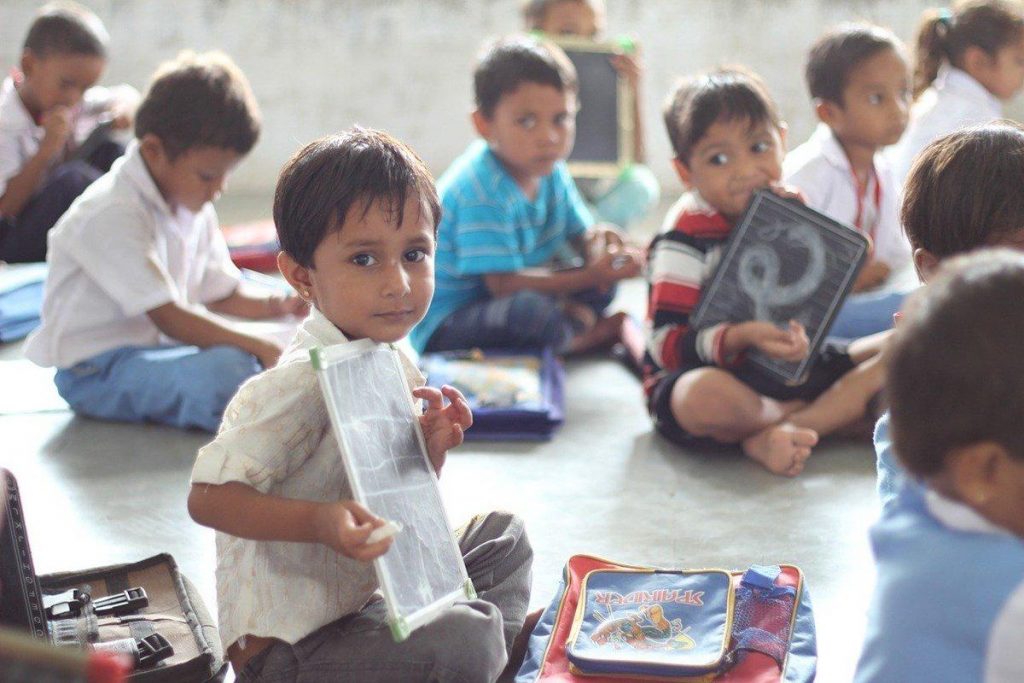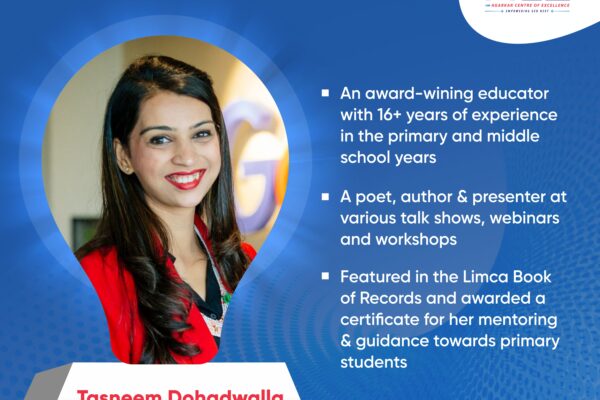2020 has recorded a fair number of petitions for the K-12 industry since lockdown and un-lockdown times and I will admit, for unaided, private schools, the all-familiar areas of fee related writs make their rounds again. The Indian education sector broadly polarised between public and private is perhaps the most challenged Corona virus sector (well, every sector will raise its hand, so I will rephrase that to “as affected”) and given that it plays a significant part in the role of building nations that are considered progressive, the current differentiated state wise developments will have deep consequences. Some of these short-sighted populist decisions taken by some states may come back to haunt us in more ways than we can imagine.
History will verify that nations that have rebuilt post wars/calamities, consciously allocated a sizeable amount to developing their education sector, especially primary education. In India, on the other hand, as a developing nation, despite the obvious population and demographic challenges we face, budget allocation year on year, leaves a lot to be desired for government aided schools. One can therefore only imagine the disruption that the pandemic has caused. The inequalities between the public and private sectors have been statistically documented time and time again, and I would safely say, if pre pandemic we were twenty years behind in terms of policies and systems, post pandemic, we will find ourselves staring down the barrel, if we do not allow experts to partake in decision making and unite this eco system. The gap threatens to widen, and I worry only hindsight will get us into a common discussion point if we do not arrest the current trends in the country. Will that be devasting? Ofcourse, it will.
The private sector, for most parts operating with its own funding has increasingly found more enrolments over the last decade, be it budget schools or mid-size or the more elite ones given their pace for change, systems and processes, infrastructure upgrades, IT capabilities, teaching-learning outcomes and best practices . For this one part of the industry, coping with lockdown times, therefore was perhaps ‘relatively’ easier as they could make the switch to remote learning or on-line in a short period of time. That meant that learning could continue for those enrolled into these schools since April 2020 without interruption given schools were under lockdown.
So how it is that an industry that could normalise for most parts became a Government intervention directive, and those not happy (parents) landed up in High Courts? For me personally, what was most surprising was that petitioners who were not pleased with judgements in certain states (not their own), decided to make it a pan India appeal and registered their prayer to the honourable Supreme Court, without first approaching their respective High Courts! Well, I am told by many in these unprecedented times, this is to be expected. The SC in the second week of July, refused to entertain the plea seeking, inter alia, a waiver of private school fees for a period of three months starting April 1 to July 1, 2020 and regulatory mechanisms of fees PAN India during lockdown. Live Law, July 11 2020 reported, “the bench was not inclined to entertain the plea and would not want to go into the merits of the issue and directed the petitioner to approach High Courts of respective states” . The bench was categoric, “It would be a stroke of genius if you can solve everybody’s problems. Problems of each state are different. It’s a situation where facts of all states must be considered. We don’t know how to solve the issue for the whole country, and that’s what you have prayed for. Whether it is release of prisoners, migrant workers, petitioners are moving this Court and feeling depraved that we are not giving the kind of relief sought. Why as a jurisdictional court, can you not approach the High Court first?”
So, what’s the crux of the matter you ask?
One of the first High Courts to direct petitioners who requested a waiver of fees for school closures was Delhi, and the Court was clear that parents must honour their commitments as long as learning was on “on-line”.
That is my opinion spurned many into action to convincing state governments to issue guide-lines to ban online classes. The reasons cited were excessive screen time, inability of the teachers, lack of IT infra at home, pressure on parents etc. The fundamental reason for all this was simply that if there was no on-line learning, schools would not be entitled to collect fees. Problem solved, in their mind. No consideration that lockdown would be many months, and perhaps a year, and this would be developmentally a set back for their children. Short-sighted, in my opinion.
As an educator, I marvel at the rationale for this directive by some states, driven largely by a non-paying fee motive for if the argument was only “screen-time”, this can be easily managed as experts – from mental health to health professionals will validate not to mention researchers world-wide. Passive recreational screen-time is detrimental when uncontrolled, but balanced, interactive engagements on the other hand, are in fact developmentally required in these lockdown times that scream for socio emotional learning! Maharashtra, Karnataka, Madhya Pradesh were states that went ahead and directed schools to discontinue on-line teaching, but courts directed them to re-think in the interest of continuous learning and for the sake of the children. It was clear with the verdict that the High Court expected States to have done more home-work prior to issuing directives, not after and then find ways to validate it.
Quite frankly, remote learning has been around for 2 centuries but unfortunately it was only in the early 2000 did some progressive nations embrace its power and potential, and understand that technology is an enabler and invested in both IT infrastructure, skilling and exposure of teachers and students to this new reality of learning. We are in 2020, and in India, we are still discussing and debating its merit instead of optimising on how to do it better. Despite these petitions and government interventions, the fact of the matter is that private unaided schools have the ability and the capability to deliver classroom experiences on -line, and should be allowed to continue to upskill their teachers, and create opportunities for better student engagement so that we kickstart our “normalising”. There’s evidence of months of engagement already, there’s validation from many parents and even teachers who have toiled hard. Only part is getting all parents to accept this remote learning as “school” and honouring their fee payments to the schools.
Well if it was this simple, we would not have petitions and TweetStorms initiated by educators, a section of parents and teachers urging some state government to take back their earlier directives.
Five High Courts have directed their States to permit on-line learning under some regulations and guidelines, which means that parents must honour their fee commitments while some states have cancelled on-line learning. This in effect means, for a sector already polarised with its inequalities between public and private and “altered” education in many ways for government schools via TV channels and other mediums (a welcome solution for millions of students in government schools for sure), we now have further polarisation by creating disparity because of different state directives, and those with perhaps the capacity to do it seamlessly, find themselves in no man’s land! And these are schools who are self-funded, rely on fee collections for a large part of their expenditure, and regulated in every way. These schools are now termed “money-making” institutions who are not sympathetic to the plight of the parents faced with financial challenges, yet these were the “sought-after” schools pre-pandemic and the one that would cement the foundation for their children?
The ground reality is that non-payment of fees (because they cannot be collected in some states) will lead to large scale unemployment as managements unable to sustain themselves, will be forced to shut down, forcing teachers and administrative staff to be laid off. Yet again, I bring up the point about those that can manage, are held back, and while disallowing them to operate with dialog with their own parents because of some “blanket” decisions, and instead of directing parents to honour their contractual commitments (as some states have done), the states are over loading themselves with problems that already has in its aided schools.
Makes one wonder how as a nation, this divided policy will serve anyone; if holding back those who can offer seamless online school experience will serve anyone’s purpose in the long run; if these decisions made today, are in the hope that schools will open soon and this problem resolves itself? At this stage, with our rising numbers and new discoveries around the spread of the virus not to mention lack of vaccine anytime before 2021, does anyone really believe we will get any time in the physical world with the kids this academic year?
Point is shall learning be allowed to continue for some, while we build capabilities for those with no access or skills, or shall we all stay at ground zero?
Point is does the private unaided sector be the one to always defend its act and justify itself simply because it is “private”. Does this marginalisation of this sector work for our economic growth, and lack of support or stimulus to this sector serve any purpose?
While you consider this, also remember right to learn is a constitutional right for every child, so is right to choose where one learns, how one learns, and ofcourse the right to earn.
While you reflect on the real motive or purpose of some of these populist directives, I leave you with what the honourable SC opinioned, “Stroke of genius if you can solve everybody’s problems …”












